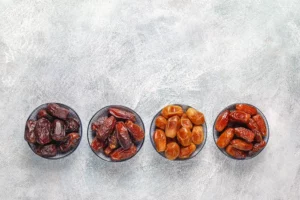
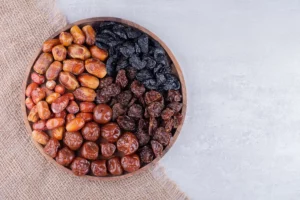
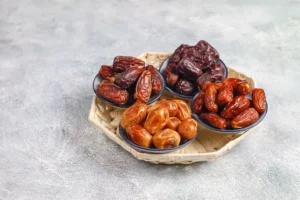
Premium Dates
Phoenix dactylifera (date or date palm) is a flowering plant species in the palm family Arecaceae, cultivated for its edible sweet fruit. The species is widely cultivated and is naturalized in many tropical and subtropical regions worldwide. Dates are such a holy fruit in the Middle East, so much that the date palm is regarded as the “Tree of Life”. Historians believe that dates are one of the ancient fruits that their cultivation traces back to around 8,000 years ago. Iranian Dates are grown on palm trees in southern provinces of Iran because they need hot climate to thrive. Palm trees grow about 21-23 meters high. There are more than 200 varieties of dates with different shapes and flavors, however, all of them are the same in nutrition. only some of them are exported to other countries and reason why this is the case it their taste, moisture and price.
Types
Akam Trade has 4 types of Iranian Dates: Kaloote Dates (kalite-kalate), Piarom Dates (Maryami Dates), Mazafati dates, Zahedi dates.
Process
is believed that the date palm originated from around the Persian Gulf, South Africa, or India, but researchers say that Iranians were the first nation to use the date as a food and for medicine purposes. The date palm is probably the oldest tree which has been cultivated in the world. Dates are divine fruit because they are mentioned in the KORAN and Jews believe that the date is one of the seven holy fruits in the world. The spread of date cultivation later accompanied the expansion of Islam and reached southern Spain and Pakistan. The Spanish were the first to introduce date palms outside the Arabian Peninsula, North Africa, and the Middle East/South Asia, carrying them to America.
Date cultivation has had a very important influence on the history of the Middle East. Without dates, no large human population could have been supported in the desert regions. The caravan routes existed for centuries mainly for the transportation of dates. Early on, date cultivation became a sacred symbol of fecundity and fertility. Dates had great spiritual and cultural significance to the people of the Middle East. Date palms and culture are depicted in ancient Assyrian and Babylonian tablets, including the famous Code of Hammurabi, which contained laws pertaining to date culture and sales. References relating to date palms are also found in ancient Egyptian, Syrian, Libyan, and Palestinian writings.
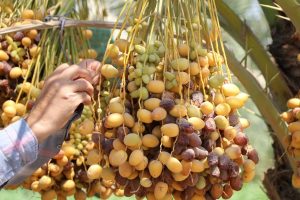
Phoenix dactylifera grows 70–75 feet (21–23 m) in height, growing singly or forming a clump with several stems from a single root system. The leaves are 4–6 meters (13–20 ft) long, with spines on the petiole, and pinnate, with about 150 leaflets; the leaflets are 30 cm (12 in) long and 2 cm (0.79 in) wide. The full span of the crown ranges from 6–10 m (20–33 ft).
Farmers do pick dates from palm tree plantations on the outskirts of Shadegan, southwestern Iran. The harvest season will last until mid-October. Some 70 types of dates are harvested from 12 thousand hectares area of plantations.

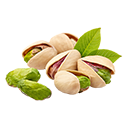 Pistachio
Pistachio Almond
Almond Walnut
Walnut Barberry
Barberry Raisins
Raisins Saffron
Saffron Jujube
Jujube Dried Fig
Dried Fig Kaloote
Kaloote Piarom
Piarom Zahedi
Zahedi Mazafati
Mazafati Estameran
Estameran Rabbi
Rabbi